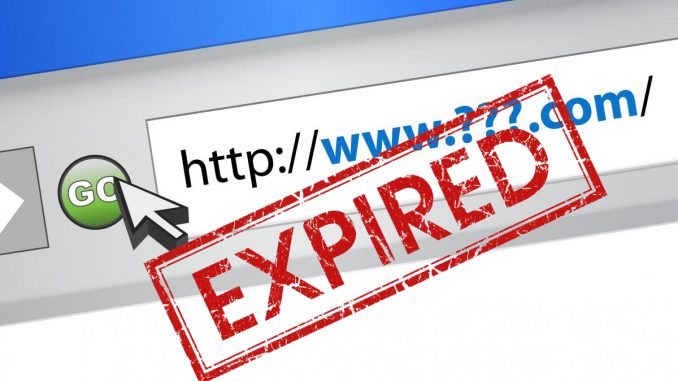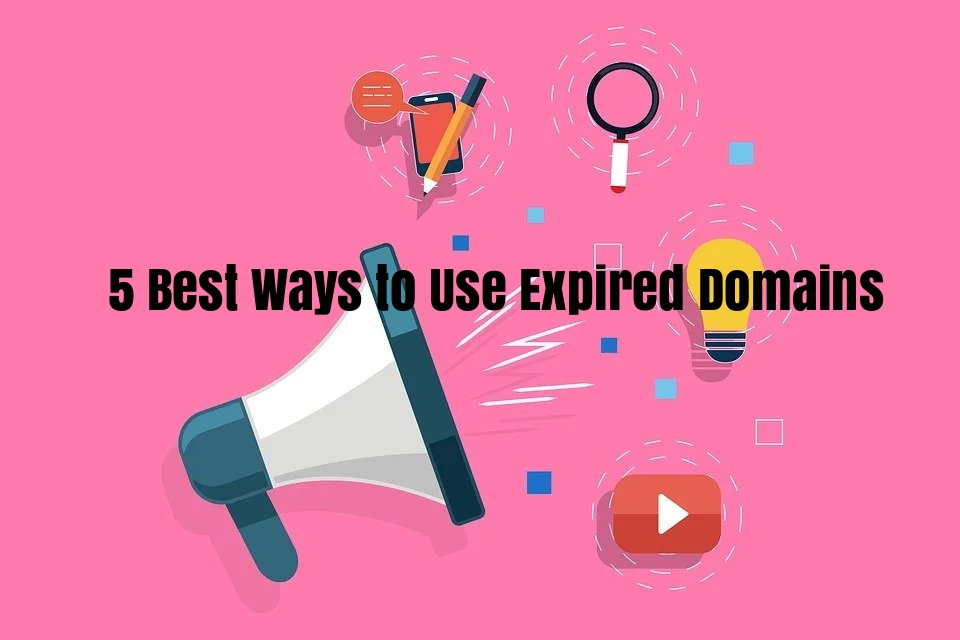What Happens When Your Domain Registration Lapses
When a domain registration expires, it can have serious consequences for your online presence. If you’re a GoDaddy customer, it’s essential to understand what happens when your domain expires to avoid any disruptions to your website and email services. Domain expiration can lead to a loss of website access, email disruption, and even potential domain hijacking. This can be devastating for businesses and individuals who rely on their online presence to communicate with customers, clients, or audiences.
When a domain expires, it enters a grace period, during which the domain owner can still renew the domain without penalty. However, if the domain is not renewed during this period, it may be deleted and become available for registration by others. This can lead to a loss of control over the domain and potentially even identity theft or cyber squatting.
In the case of GoDaddy, the domain expiration process typically involves a series of notifications and warnings to the domain owner. If the domain is not renewed, it will be deleted and may be auctioned off to the highest bidder. This can result in significant financial losses and damage to your online reputation.
Furthermore, domain expiration can also impact your search engine rankings. When a domain expires, search engines like Google may remove the website from their index, leading to a loss of visibility and potential customers. This can be particularly devastating for businesses that rely on search engine traffic to drive sales and revenue.
It’s essential to take proactive steps to prevent domain expiration and protect your online presence. By understanding the domain expiration process and taking steps to prevent it, you can avoid the consequences of domain expiration and maintain control over your online identity.
How to Prevent Domain Expiration: A Step-by-Step Guide
Preventing domain expiration is crucial to maintaining control over your online presence. With GoDaddy, you can take proactive steps to ensure your domain remains active and accessible. Here’s a step-by-step guide on how to prevent domain expiration with GoDaddy:
Step 1: Set up Auto-Renewal
GoDaddy offers an auto-renewal feature that automatically renews your domain registration before it expires. To set up auto-renewal, log in to your GoDaddy account, navigate to the “Domains” section, and click on the “Auto-Renewal” option. Make sure to update your payment information to ensure seamless renewal.
Step 2: Monitor Expiration Dates
Keep track of your domain’s expiration date by regularly checking your GoDaddy account or setting up reminders. You can also set up domain expiration notifications to alert you when your domain is approaching expiration.
Step 3: Update Payment Information
Ensure your payment information is up-to-date to avoid any disruptions to your domain registration. GoDaddy accepts various payment methods, including credit cards, PayPal, and bank transfers. Update your payment information by logging in to your GoDaddy account and navigating to the “Payment Methods” section.
Step 4: Verify Domain Contact Information
Verify your domain contact information to ensure you receive important notifications and updates from GoDaddy. Make sure your email address, phone number, and mailing address are accurate and up-to-date.
By following these steps, you can prevent domain expiration and maintain control over your online presence with GoDaddy. Remember to regularly review your domain settings and update your information as needed to avoid any potential issues.
Additionally, GoDaddy offers a range of domain management tools and services to help you manage your domains effectively. Take advantage of these tools to streamline your domain management and ensure your online presence remains secure and accessible.
GoDaddy Domain Expiration Process: What to Expect
When a domain registration expires with GoDaddy, it enters a series of stages that can ultimately lead to domain deletion. Understanding the domain expiration process with GoDaddy can help you take proactive steps to prevent domain loss and maintain control over your online presence.
Stage 1: Grace Period (0-30 days)
After a domain expires, GoDaddy enters a 30-day grace period during which the domain owner can still renew the domain without penalty. During this period, the domain remains active, and the owner can continue to use the domain as usual.
Stage 2: Redemption Period (30-60 days)
If the domain is not renewed during the grace period, it enters a 30-day redemption period. During this period, the domain owner can still recover the domain by paying a redemption fee, which varies depending on the domain extension. The redemption fee is typically higher than the standard renewal fee.
Stage 3: Domain Deletion (60+ days)
If the domain is not recovered during the redemption period, it is deleted and becomes available for registration by others. This can lead to a loss of control over the domain and potentially even domain hijacking.
Fees Associated with Domain Expiration
GoDaddy charges various fees during the domain expiration process, including:
– Redemption fee: This fee varies depending on the domain extension and is typically higher than the standard renewal fee.
– Late renewal fee: This fee is charged if the domain is renewed during the redemption period.
– Domain recovery fee: This fee is charged if the domain is recovered during the redemption period.
Understanding the domain expiration process with GoDaddy can help you take proactive steps to prevent domain loss and maintain control over your online presence. By renewing your domain registration before it expires, you can avoid the fees and potential consequences associated with domain expiration.
Consequences of Domain Expiration on Search Engine Rankings
Domain expiration can have a significant impact on search engine rankings, potentially leading to a loss of SEO efforts and decreased online visibility. When a domain expires, search engines like Google may remove the website from their index, causing a drop in rankings and a loss of organic traffic.
Search engines use various factors to determine website rankings, including domain age, content quality, and backlinks. When a domain expires, these factors are disrupted, and the website may be removed from the search engine index. This can lead to a loss of visibility, making it harder for users to find the website.
Furthermore, domain expiration can also impact the website’s authority and trustworthiness. Search engines may view an expired domain as abandoned or untrustworthy, leading to a decrease in rankings and a loss of credibility.
Recovering from domain expiration can be challenging, especially if the website has been removed from the search engine index. It may take several weeks or even months for the website to regain its previous rankings, and in some cases, the damage may be irreparable.
To avoid the consequences of domain expiration on search engine rankings, it’s essential to maintain control over the domain and prevent expiration. By renewing the domain registration before it expires, website owners can ensure that their online presence remains intact and their search engine rankings are protected.
GoDaddy, as a popular domain registrar, offers various tools and services to help website owners manage their domains and prevent expiration. By using these tools, website owners can ensure that their domains remain active and their online presence remains visible to search engines.
How to Recover a Deleted Domain with GoDaddy
If your domain has been deleted due to expiration, you can still recover it with GoDaddy. The process of recovering a deleted domain involves several steps, including the redemption period, fees, and potential challenges.
Redemption Period
After a domain is deleted, it enters a redemption period, which typically lasts for 30 days. During this period, the domain owner can recover the domain by paying a redemption fee, which varies depending on the domain extension.
Fees Associated with Domain Recovery
GoDaddy charges a redemption fee for recovering a deleted domain, which can range from $80 to $200, depending on the domain extension. Additionally, there may be other fees associated with domain recovery, such as a reinstatement fee or a transfer fee.
Potential Challenges
Recovering a deleted domain can be challenging, especially if the domain has been registered by someone else. In such cases, the domain owner may need to negotiate with the new registrant to recover the domain.
Steps to Recover a Deleted Domain with GoDaddy
To recover a deleted domain with GoDaddy, follow these steps:
1. Log in to your GoDaddy account and navigate to the “Domains” section.
2. Click on the “Deleted Domains” tab and select the domain you want to recover.
3. Click on the “Recover Domain” button and follow the prompts to complete the recovery process.
4. Pay the redemption fee and any other associated fees.
5. Wait for the domain to be recovered and restored to your account.
By following these steps, you can recover a deleted domain with GoDaddy and restore your online presence.
Best Practices for Domain Management with GoDaddy
Effective domain management is crucial to maintaining a strong online presence. With GoDaddy, you can take advantage of various tools and services to manage your domains efficiently. Here are some best practices for domain management with GoDaddy:
1. Set up Domain Forwarding
Domain forwarding allows you to redirect visitors from one domain to another. This can be useful if you have multiple domains and want to direct traffic to a single website. GoDaddy offers domain forwarding as a free service, making it easy to manage your domains and direct traffic to your main website.
2. Create a Domain Portfolio
A domain portfolio is a collection of domains that you own and manage. GoDaddy allows you to create a domain portfolio, making it easy to manage multiple domains from a single account. This can help you keep track of your domains, monitor expiration dates, and make updates to your domains as needed.
3. Monitor Domain Expiration Dates
Monitoring domain expiration dates is crucial to preventing domain expiration. GoDaddy offers a domain expiration date tracker, making it easy to keep track of your domains and ensure they don’t expire. You can also set up automatic renewal to ensure your domains are always up to date.
4. Use Domain Locking
Domain locking is a security feature that prevents unauthorized changes to your domain settings. GoDaddy offers domain locking as a free service, making it easy to protect your domains from unauthorized changes.
5. Keep Your Domain Contact Information Up to Date
Keeping your domain contact information up to date is crucial to ensuring you receive important notifications and updates from GoDaddy. Make sure to update your contact information regularly to ensure you don’t miss any important notifications.
By following these best practices, you can effectively manage your domains with GoDaddy and maintain a strong online presence.
Common Mistakes to Avoid When Dealing with Domain Expiration
When dealing with domain expiration, it’s essential to avoid common mistakes that can lead to domain loss, website downtime, and other issues. Here are some common mistakes to avoid when dealing with domain expiration:
1. Ignoring Expiration Notices
Ignoring expiration notices can lead to domain expiration, which can result in website downtime, email disruption, and potential domain hijacking. Make sure to monitor your domain expiration dates and take action before the expiration date.
2. Failing to Update Payment Information
Failing to update payment information can lead to domain expiration, as the domain registrar may not be able to process the renewal payment. Make sure to keep your payment information up to date to avoid domain expiration.
3. Not Monitoring Domain Status
Not monitoring domain status can lead to domain expiration, as you may not be aware of any issues with your domain. Make sure to regularly check your domain status to ensure it’s active and up to date.
4. Not Renewing Domains on Time
Not renewing domains on time can lead to domain expiration, which can result in website downtime, email disruption, and potential domain hijacking. Make sure to renew your domains on time to avoid domain expiration.
5. Not Using Domain Locking
Not using domain locking can lead to unauthorized changes to your domain settings, which can result in domain hijacking. Make sure to use domain locking to protect your domains from unauthorized changes.
By avoiding these common mistakes, you can ensure that your domains remain active and up to date, and that your online presence remains secure.
Conclusion: Protect Your Online Presence with Proper Domain Management
Proper domain management is crucial to maintaining a strong online presence. By understanding domain expiration, preventing lapses, and recovering deleted domains, you can ensure that your website and online presence remain secure and accessible to your audience.
GoDaddy is a popular domain registrar that offers a range of tools and services to help you manage your domains effectively. By following the tips and best practices outlined in this article, you can take control of your online presence and protect your website from domain expiration.
Remember, domain expiration can have serious consequences, including loss of website access, email disruption, and potential domain hijacking. By being proactive and taking steps to prevent domain expiration, you can avoid these consequences and maintain a strong online presence.
In conclusion, proper domain management is essential to maintaining a strong online presence. By understanding domain expiration, preventing lapses, and recovering deleted domains, you can ensure that your website and online presence remain secure and accessible to your audience. Take control of your online presence with GoDaddy today.







